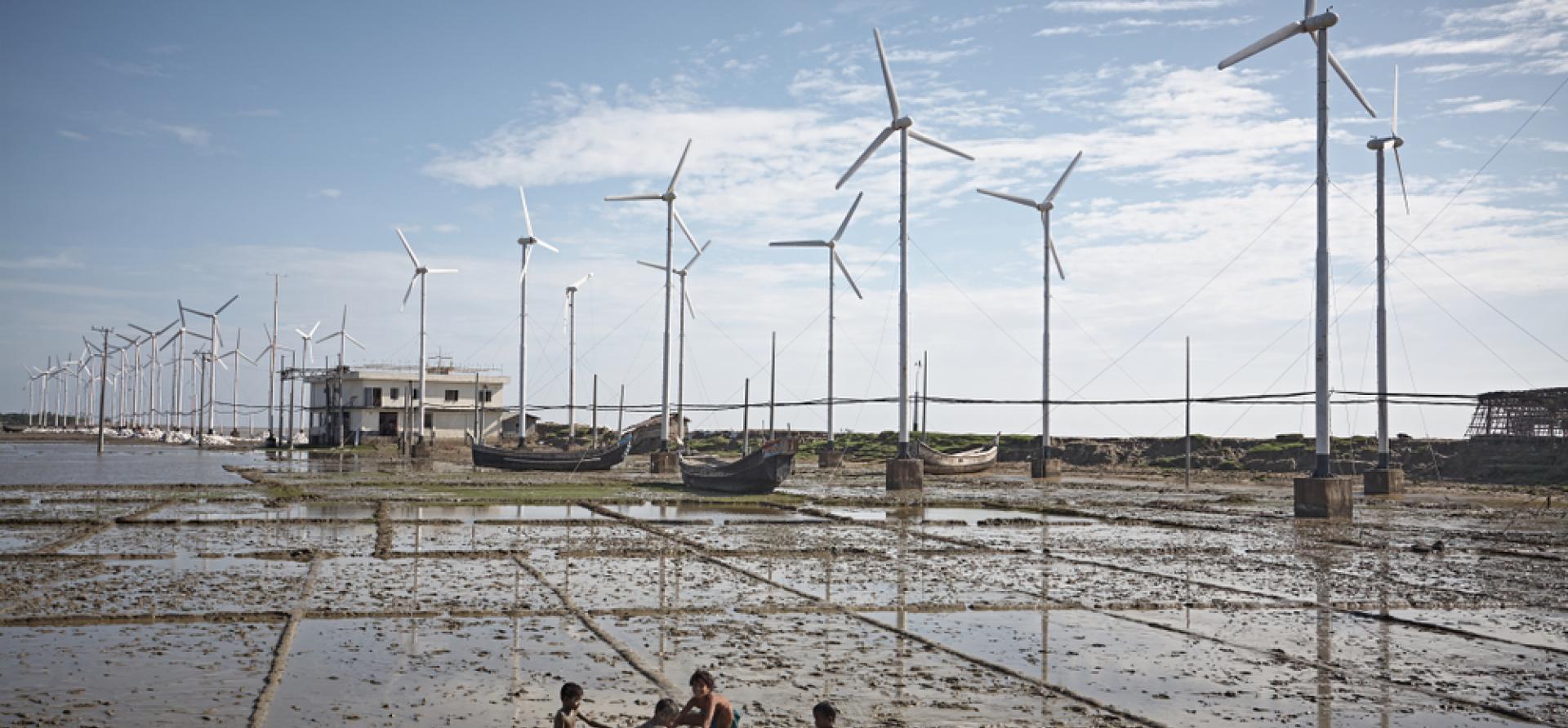Meeting peak demand: How renewables can be the game changer for Bangladesh

Key Findings
As Bangladesh aims to become a developed country in 2041, it must have a long-term plan to meet its future peak demand. The rising mercury will lead to a very high cooling demand. With more power demand also expected from the industry sector, frequent load-shedding cannot be an option.
Bangladesh can install 1,700-3,400 megawatts (MW) of solar power capacity within the existing system capacity and thus reduce electricity consumption from expensive power plants during the daytime. Apart from reducing costs and addressing BPDB's revenue shortfall, this can eventually help meet daytime peak demand comfortably.
While land constraints take centre stage in discussions related to renewable energy, installation of a couple of thousand MW solar capacity, including grid-scale and rooftop systems, should not be a problem. Since arranging land for some 97 special economic zones (SEZs) is on track, accommodating utility-scale solar is possible through proper land resource mapping.
As Bangladesh is on course to select two offshore wind sites based on a feasibility study and international organisations are considering an investment in offshore wind power a good business prospect, managing evening peak demand through renewable energy seems possible.
Renewable energy continues to register record growth each year as it outpaces the new capacity addition of fossil fuels-based systems worldwide. With 295 gigawatts (GW) added globally in 2022, renewables contributed a mammoth 83% of the year's new power system capacity addition, following 81% in the previous year.
Asia, in particular, installed significant renewable capacity in 2022. China added 141GW, while India added 15.7GW, or 92% of the country's new capacity addition during the year.
As renewable capacities grow, countries are also reaping the rewards. For instance, India saved fossil fuel import bills worth US$4.2 billion, attributable to solar energy, only in the first six months of 2022.
While Bangladesh is aware of the global race for clean energy and the interest in the green transition, as things stand, it is yet to mobilise full efforts to take advantage of renewable energy. At times, the country also struggles with land scarcity.
Although Bangladesh's population density is high and arranging land without disrupting agricultural production is difficult, it needs to be purposeful and maximise its advantages. This is because renewable energy is the cheapest solution for Bangladesh to meet its peak demand. The country can also explore different options, such as utility-scale and rooftop solar and offshore wind, to reduce the pressure on its scarce land.
Bangladesh's peak electricity demand patterns
Bangladesh experiences two peaks in electricity demand - one during the day and the other in the evening. Data from the Bangladesh Power Development Board (BPDB) and the Power Grid Company of Bangladesh (PGCB) show that the country has a comparatively higher peak demand during the evening. For instance, the country's power system served the highest ever peak demand of 15,648 megawatts (MW) at 9pm on 19 April 2023. In comparison, it served the maximum daytime peak demand of 13,415MW on the same date. Likewise, the BPDB served the average day peak demand of 11,504MW in April 2023 against the average evening peak demand of 12,833MW, representing a significant gap.
Different months of the year also portray a similar phenomenon, with more demand in the evening.
While there might be some concerns about feeding renewable energy in the power system as the demand is comparatively higher in the evening, it is necessary to delve deeper into how the demand pattern will likely shift in the foreseeable future. Over the last few years, power demand from the industry sector has not increased as expected. This is partly because of the pandemic-led supply chain disruptions and the multifaceted impacts of the geopolitical crisis on Bangladesh.
As the country envisions transforming it into a developed nation by 2041 and is creating 97 special economic zones (SEZs) in line with its vision, the power consumption pattern will perhaps shift.
Role of renewables in meeting peak demands
Over the last year, Bangladesh grappled with challenges to meet both day and evening peak demand. With periodic load shedding, it tried to ease the burden of imported fossil fuels on the economy. However, the Institute for Energy Economics and Financial Analysis's (IEEFA) study shows that Bangladesh can fit renewable energy into its power system to address peak demands.
IEEFA's energy curve analysis from March 2022 to February 2023 highlights that Bangladesh can install 1,700-3,400MW of solar power capacity within the existing system capacity and thus reduce electricity consumption from expensive power plants during the daytime. Apart from reducing costs and addressing BPDB's revenue shortfall, this can eventually help meet daytime peak demand comfortably.
Likewise, Bangladesh's power system has the room to accommodate 2,500-4,000MW of wind power capacity to reduce its reliance on costly fossil-fuel-based power plants in the evening.
While land constraints take centre stage in discussions related to renewable energy, installation of a couple of thousand MW solar capacity, including grid-scale and rooftop systems, should not be a problem. Since arranging land for some 97 SEZs is on track, accommodating utility-scale solar is possible through proper land resource mapping. Notably, solar irrigation systems also have the potential to contribute significantly.
Moreover, the National Renewable Energy Laboratory (NREL) previously identified that the country can explore wind energy in its coastal areas. The preliminary assessment of NREL further exhibited that Bangladesh has over 20,000 Km2 of land with wind speeds ranging from 5.75 to 7.75 m/s.
As Bangladesh is on course to select two offshore wind sites based on another feasibility study and international organisations are considering an investment in offshore wind power a good business prospect, managing evening peak demand through renewable energy seems possible.
Although it is often said that wind speed increases in the afternoon and remains high at night, a solar-wind hybrid can help meet the country's day and evening peak demands cost-effectively.
The confidence of investors matters
While Bangladesh manages accounts well to pay its dues or instalments for loans, the energy price shocks and devaluation of the local currency against the US dollar have resulted in tight fiscal conditions. Amid dues against imported fossil fuels, Bangladesh has recently sought loans to settle the bills in an extraordinary scenario.
Given that many future renewable energy projects will be an independent power producer (IPP) model and will require international participation, the investment-return certainty will be key to unlocking investment. During the two-day-long conference held in Dhaka in May 2023, organised by the United States-based National Bureau of Asian Research (NBR), speakers also raised the significance of having certainty on return. It is, however, expected that the situation in the country will improve soon.
As Bangladesh aims to become a developed country in 2041, it must have a long-term plan to meet its future peak demand. The rising mercury will lead to a very high cooling demand. With more power demand also expected from the industry sector, frequent load-shedding cannot be an option.
Bangladesh should learn from the past year that having a couple of thousand MW renewable energy capacity would have helped it fulfil peak power demand and reduce import bills.
The article was first published by New Age.















